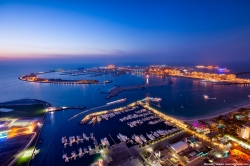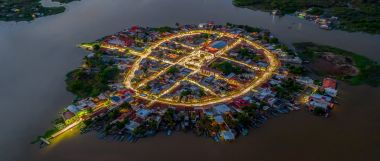ABOUT Corsica
Corsica (; Corsican: [ˈkorsiɡa], Italian: [ˈkɔrsika]; French: Corse, [kɔʁs] (listen); Ligurian: Còrsega) is an island in the Mediterranean Sea and politically one of the eighteen regions of France. It is the fourth-largest island in the Mediterranean and lies southeast of the French mainland, west of the Italian Peninsula and immediately north of the Italian island of Sardinia, the land mass nearest to it. A single chain of mountains makes up two-thirds of the island. In 2016, it had a population of 330,455.
The island is a territorial collectivity of France. The regional capital is Ajaccio. Although the region is divided into two administrative departments, Haute-Corse and Corse-du-Sud, their respective regional and departmental territorial collectivities were merged on 1 January 2018 to form the single territorial collectivity of Corsica. As such, Corsica enjoys a greater degree of autonomy than other French regional collectivities; for example, the Corsican Assembly is permitted to exercise limited executive powers. Corsica's second-largest town is Bastia, the prefecture of Haute-Corse.
Corsica was ruled by the Republic of Genoa from 1284 to 1755, when it became a self-proclaimed, Italian-speaking Republic. In 1768, Genoa officially ceded it to Louis XV of France as part of a pledge for the debts it had incurred by enlisting France's military help in suppressing the Corsican revolt; in 1769 France subsequently went on to annex it. Napoleon Bonaparte was a native Corsican, born that same year in Ajaccio. His ancestral home, Maison Bonaparte, is today a significant visitor attraction and museum. Because of Corsica's historical ties to Italy and especially Tuscany, the island has retained many Italian cultural elements, and many Corsican surnames are rooted in the Italian peninsula. Corsican, the native tongue, is recognised as a regional language by the Government of France.
The island is a territorial collectivity of France. The regional capital is Ajaccio. Although the region is divided into two administrative departments, Haute-Corse and Corse-du-Sud, their respective regional and departmental territorial collectivities were merged on 1 January 2018 to form the single territorial collectivity of Corsica. As such, Corsica enjoys a greater degree of autonomy than other French regional collectivities; for example, the Corsican Assembly is permitted to exercise limited executive powers. Corsica's second-largest town is Bastia, the prefecture of Haute-Corse.
Corsica was ruled by the Republic of Genoa from 1284 to 1755, when it became a self-proclaimed, Italian-speaking Republic. In 1768, Genoa officially ceded it to Louis XV of France as part of a pledge for the debts it had incurred by enlisting France's military help in suppressing the Corsican revolt; in 1769 France subsequently went on to annex it. Napoleon Bonaparte was a native Corsican, born that same year in Ajaccio. His ancestral home, Maison Bonaparte, is today a significant visitor attraction and museum. Because of Corsica's historical ties to Italy and especially Tuscany, the island has retained many Italian cultural elements, and many Corsican surnames are rooted in the Italian peninsula. Corsican, the native tongue, is recognised as a regional language by the Government of France.




